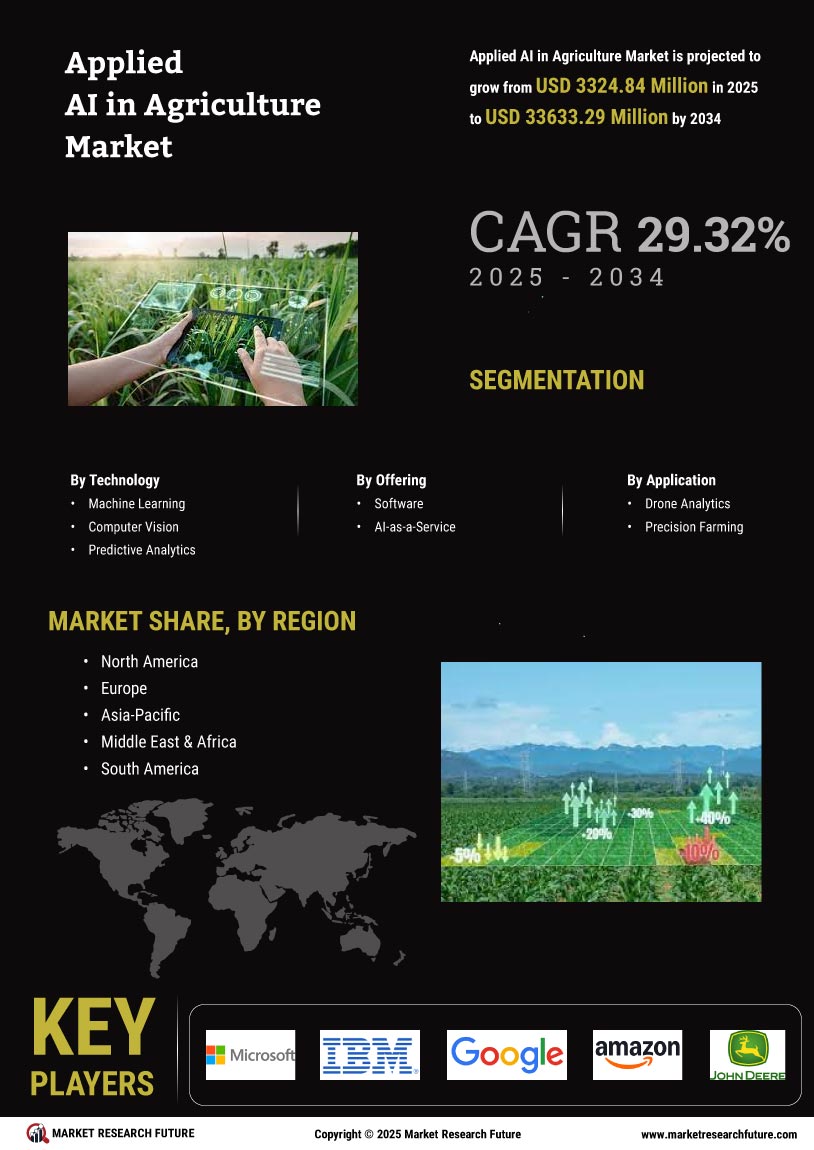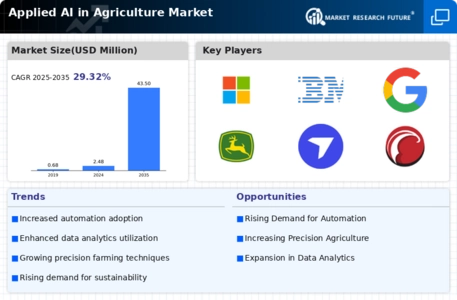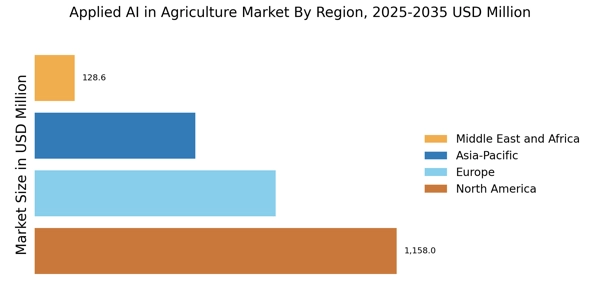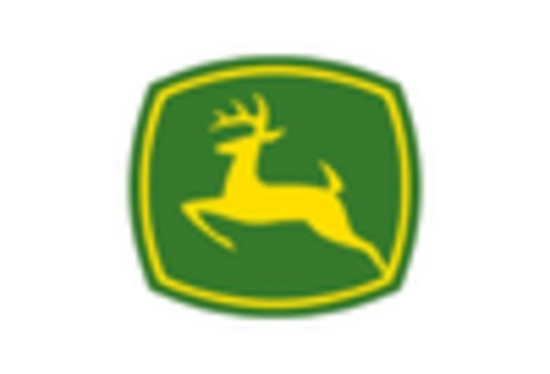Sustainability Initiatives
Sustainability is becoming a cornerstone of the Applied AI in Agriculture Market. With increasing awareness of environmental issues, farmers are turning to AI technologies to promote sustainable practices. AI can optimize resource usage, reduce waste, and enhance biodiversity through precision agriculture techniques. For example, AI-driven irrigation systems can minimize water usage while maximizing crop health. This focus on sustainability aligns with global initiatives aimed at reducing the carbon footprint of agriculture. As such, the integration of AI in sustainable farming practices is likely to gain momentum, appealing to environmentally conscious consumers and stakeholders.
Data-Driven Decision Making
The shift towards data-driven decision making is a prominent trend in the Applied AI in Agriculture Market. Farmers are increasingly relying on AI analytics to interpret vast amounts of agricultural data, which aids in making informed decisions. This trend is underscored by the fact that the agricultural data market is projected to reach USD 5 billion by 2026. AI tools provide insights into crop health, market trends, and resource allocation, thereby enhancing overall farm management. As data becomes more accessible, the reliance on AI for strategic decision-making is likely to grow, further embedding AI into agricultural practices.
Cost Reduction and Efficiency
Cost efficiency remains a pivotal driver in the Applied AI in Agriculture Market. AI technologies facilitate precision farming, which allows farmers to reduce input costs significantly. For instance, AI systems can analyze soil health and weather patterns, enabling targeted application of fertilizers and pesticides. This targeted approach not only conserves resources but also reduces operational costs. Studies suggest that farmers employing AI solutions can save up to 20% on input costs, making agriculture more economically viable. Consequently, the drive for cost reduction is propelling the adoption of AI technologies in farming practices.
Increased Crop Yield through AI
The Applied AI in Agriculture Market is witnessing a surge in the adoption of AI technologies aimed at enhancing crop yields. By utilizing machine learning algorithms and data analytics, farmers can optimize planting schedules, irrigation, and fertilization processes. Reports indicate that AI-driven solutions can potentially increase crop yields by up to 30%, thereby addressing food security challenges. This trend is further supported by the growing demand for food due to rising populations. As a result, the integration of AI in agricultural practices is becoming a critical factor for farmers seeking to maximize productivity while minimizing resource usage.
Enhanced Supply Chain Management
The Applied AI in Agriculture Market is also influenced by advancements in supply chain management facilitated by AI technologies. AI can streamline logistics, predict demand, and optimize inventory management, thereby reducing waste and improving efficiency. For instance, AI algorithms can analyze market trends to forecast crop prices, enabling farmers to make timely decisions about when to sell their produce. This capability is particularly crucial in a market where fluctuations can significantly impact profitability. As supply chain complexities increase, the role of AI in enhancing operational efficiency and market responsiveness is expected to expand.


















Leave a Comment